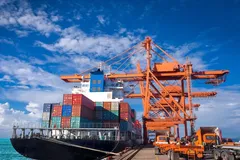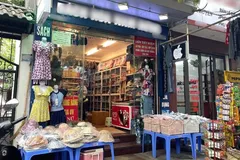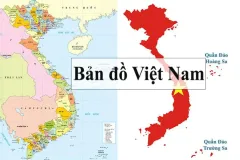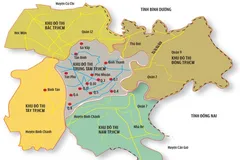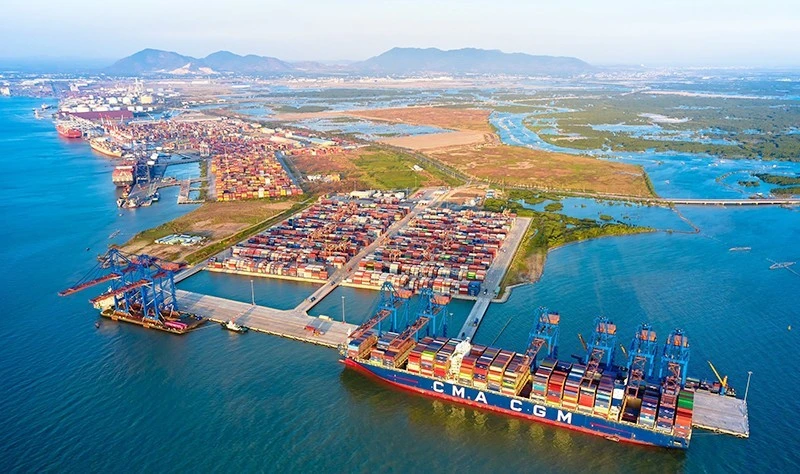
Many countries have successfully integrated FTZs with major seaports and airports, capitalizing on strategic locations to drive economic growth. For Vietnam, establishing a well-structured FTZ system could significantly boost its trade potential and global competitiveness.
Unlocking Vietnam’s FTZ Potential
FTZs are typically established in areas with inherent trade advantages, such as major seaports, international airports, and national borders. China, despite adopting the FTZ model later than some of its regional counterparts, now has 22 FTZs, which contributed to 18.1% of total foreign direct investment (FDI) and 17.8% of total import-export turnover in 2022.
Each FTZ in China serves distinct purposes. For example, the Shanghai FTZ, established in 2013, covers 120 square kilometers and was China’s first. In 2018, China took a bold step by transforming the entire Hainan province (35,400 square kilometers) into an FTZ, demonstrating the flexibility and scalability of this model. In 2019, six additional FTZs were introduced, each focusing on specific policy goals or trade partnerships with select regions and countries.
Other economies in Asia have also successfully adopted the FTZ model. Taiwan’s Kaohsiung FTZ spans 669 hectares and permits a wide array of services, including trade, warehousing, logistics, customs clearance, and manufacturing. Similarly, South Korea has embedded FTZs into its Free Economic Zones (FEZs), prioritizing manufacturing, logistics, distribution, and trade while integrating them with key seaports.
Vietnam is uniquely positioned to benefit from an FTZ model. Geographically, it ranks second only to Singapore in Southeast Asia’s logistics landscape. Over 65,000 ships pass through the East Sea annually, transporting nearly half of the world’s traded goods. Infrastructure-wise, Vietnam boasts extensive connectivity, including the North-South railway, National Highway 1A, and the Ho Chi Minh Highway, which span the country’s length. Additionally, railway links such as Hanoi-Dong Dang (which connects to China’s Hengyang-Pingxiang railway) and Hanoi-Lao Cai (which connects to China’s Kunming-Hekou railway) enhance cross-border trade potential.
Vietnam also possesses a vast consumer market. With a population of 100 million, the country is among the top 20 economies in terms of foreign trade activity. A 2022 report by Agility, a global logistics firm, ranked Vietnam 11th among 50 emerging logistics markets, highlighting its growing significance in global trade networks.
However, despite these advantages, Vietnam’s logistics sector still struggles with inefficiencies that hinder its ability to compete on a global scale.
Challenges Hindering Vietnam’s Logistics Growth
Vietnam’s logistics costs remain a significant barrier to growth. According to the Vietnam Logistics Business Association (VLA), logistics expenses account for 16.8% of the country’s GDP—considerably higher than the global average of 10.7%. This makes Vietnamese exports less competitive and discourages FDI in key manufacturing sectors.
Industry reports further highlight the disproportionate logistics costs in specific sectors. For example, logistics expenses in the agricultural industry account for 20-25% of production costs, while logistics-related costs in the wood industry are 10-15% higher than those of competing nations.
Vietnam’s logistics sector currently faces three critical obstacles. The lack of intermodal connectivity forces exporters to coordinate independently with multiple service providers, including road, rail, air, and maritime transport companies, while also dealing with separate entities for container supplies, warehousing, and sanitation services. This fragmented system results in delays and increased costs. Seaport infrastructure remains another major challenge, despite Vietnam’s heavy reliance on maritime trade, which accounts for 90% of exports. The country’s busiest port, Cat Lai, can only accommodate vessels up to 25,000 TEU, requiring many shipments to be transshipped through regional hubs such as Malaysia’s Tanjung Pelepas Port, which further escalates costs and delays. Additionally, domestic shipping capacity is weak, with Vietnamese firms handling only 12% of the country’s export cargo. This heavy reliance on foreign shipping companies not only raises costs but also reduces Vietnam’s control over its trade logistics.
To maximize the benefits of an FTZ model, Vietnam should learn from successful implementations worldwide and tailor the system to address its own logistical challenges. A successful FTZ model should extend beyond trade and logistics to include high-value sectors such as financial services, technology research hubs, and corporate headquarters. Vietnam should adopt a decentralized approach by developing multiple functional subzones, each designed to support specialized industries. To attract investors, the government must introduce policies that streamline customs procedures, taxation, foreign exchange management, and business registration. Additionally, the administrative framework governing FTZs should be efficient and transparent, allowing local authorities greater autonomy in crafting business-friendly regulations aligned with global standards.
Vietnam has made initial strides in developing FTZs, but a well-structured roadmap is crucial for long-term success. Enhancing and modernizing major seaports such as Cat Lai and Lach Huyen will allow Vietnam to accommodate larger vessels and reduce dependency on regional transit hubs. Strengthening infrastructure links between industrial zones, seaports, and FTZs will ensure seamless logistics connectivity. To attract global investors, the government must offer incentives, including tax breaks, simplified customs procedures, and streamlined business licensing. Supporting domestic shipping firms through initiatives such as subsidized loans for fleet expansion and incentives for joint ventures with international carriers will help reduce Vietnam’s reliance on foreign shipping companies.
With targeted policy reforms and infrastructure development, Vietnam has the potential to build a thriving FTZ system that enhances global trade competitiveness and attracts sustained foreign investment. By taking decisive steps, the country can establish itself as a major hub for international commerce, fostering long-term economic growth and prosperity.











